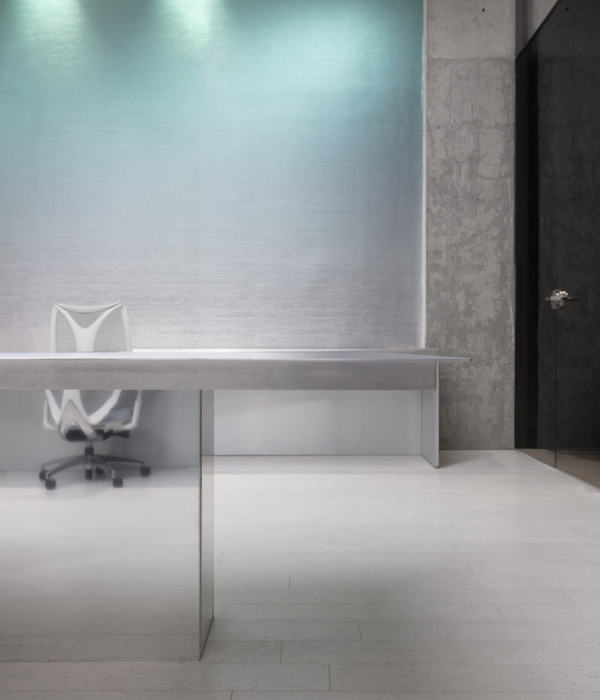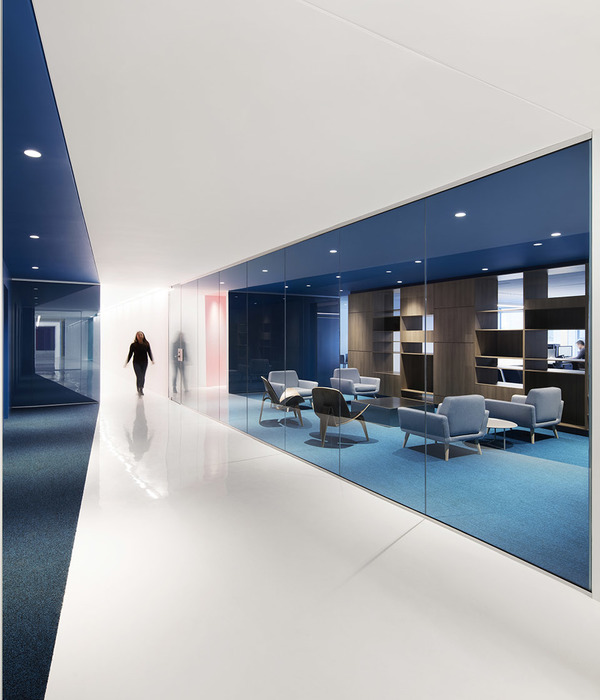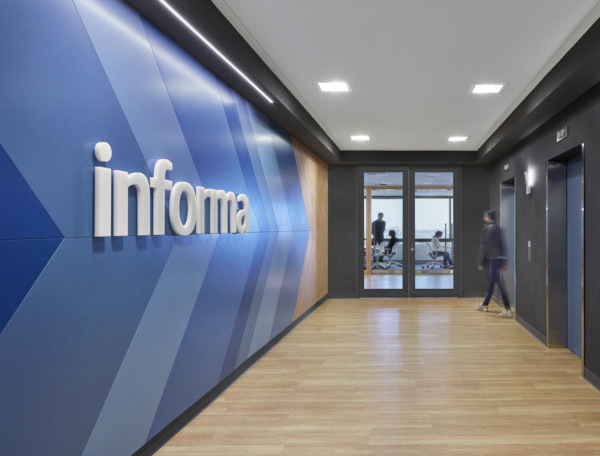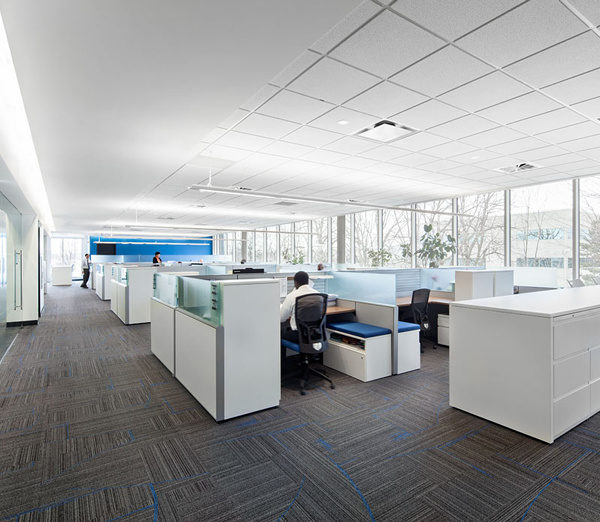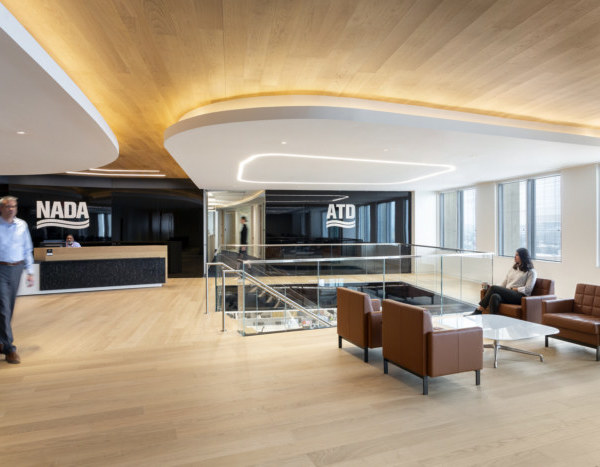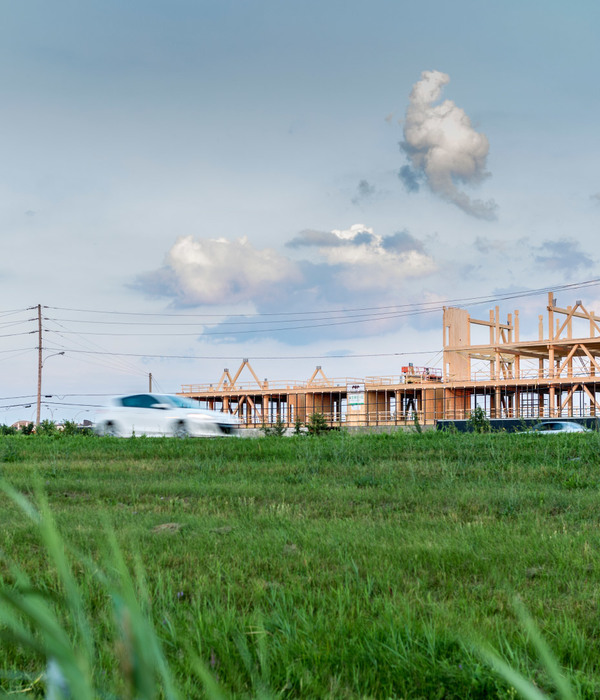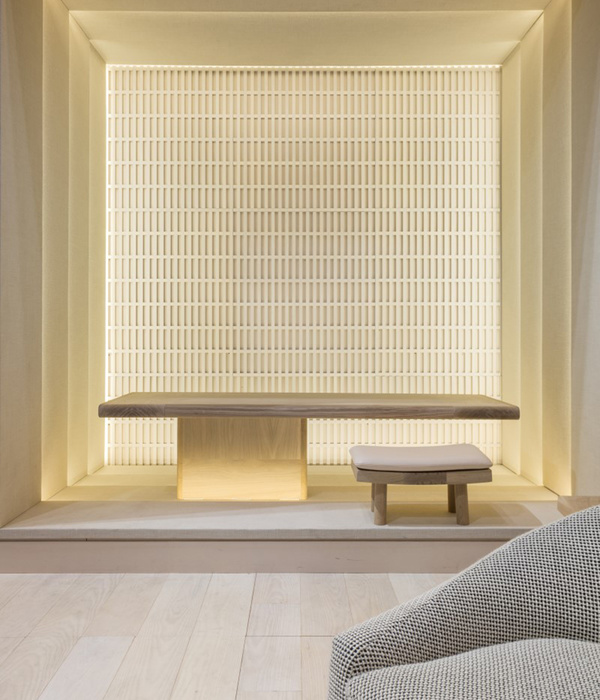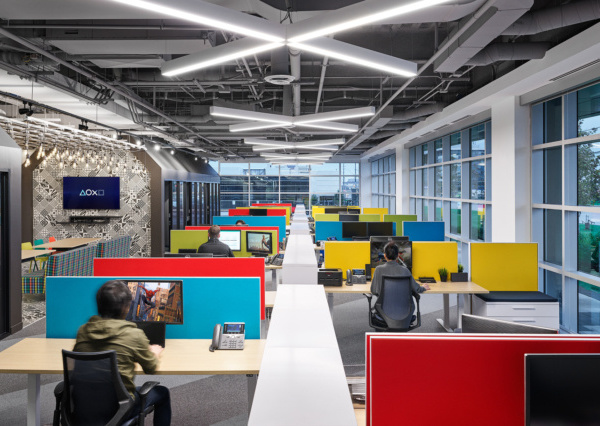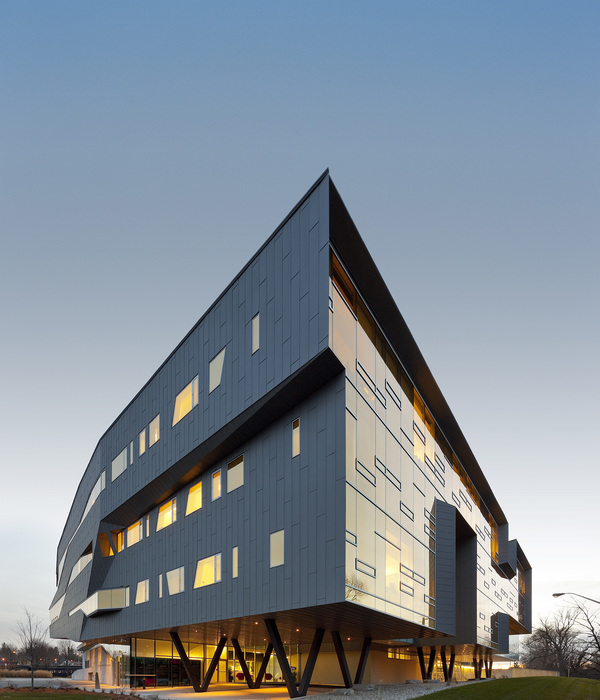“The scale of this project is huge and involved amazing community effort. Despite its scale, it still feels soft. It is a great analysis and it well communicated.It is very likely to succeed because Seattle likes its waterfront.”
—2013 Professional Awards Jury
“该项目规模巨大,凝结了惊人的公众力量。然而这个巨型的建筑项目却并不失柔和。它是一次伟大的分析和良好的沟通实践。这个项目一定会取得成功,因为西雅图喜欢这个新的滨水区。”
——2013专业奖评审委员会
Waterfront Seattle By
James Corner Field Operations
, New York, NY 更多请至:
“西雅图”的大型基建项目提供了一个重新规划改造旧的中心滨水区,建造全新滨水区的绝好机会。涉及基建工程区域的概念计划以及涉及毗邻地区的纲要计划为我们提供了一个中心滨水区改造、连接西雅图和艾略特湾工程的完全视角。
The City of Seattle acknowledged that the large infrastructural works they had to undertake created an opportunity to re-imagine their aging central waterfront and create a new “waterfront for all”. This study responds to the opportunity with a Concept Plan for the areas affected by the infrastructuralwork as well as a Framework Plan for all adjacent areas, thus creating a complete vision to transform the central waterfront and reconnect Seattle to Elliott Bay.
▼总平面图Site Plan
项目描述
项目小组的目标总结如下:
建造全民受益的滨水区
将海滨线和可持续的创新设计置于首要地位
将城市与海滨重新结合
尊重西雅图的过去、现在和未来
提高通行性和移动性
开创与时俱进的大胆创新视角
组建一支稳定的领导队伍—从理念、建设到运作
西雅图及普通民众通过典型的民主程序参与了项目分析与规划的每一个细节,甚至包括选择设计团队。为了让广大社区民众参与决策,设计团队举行了大型公众会议、发布简报、发展合作并举办了50多个组织机构共同参加的圆桌会议。其关注焦点不再是意见的数量,而是质量,即重视对设计有价值的意见。外联团队的关注点在于如何吸引新观光客、如何将项目拓展至更广泛的社区以及如何开展与社区组织和领导间的合作。 与此同时,还成立了网站waterfrontseattle.org方便民众获取项目信息,更好地参与决策。
西雅图滨水区结合城市规模、社区规模和滨水区规模三个元素统筹考虑中心滨水区的规划和设计,并把城区设计放在首位。景观建筑师带领由工程师、生态学家、设计师和艺术顾问、平面和标识设计师、建筑师及交通顾问组成的团队与投资者一起展开了滨水区的全景设计。
西雅图滨水区的历史就是工业、航运和交通的发展历史。延续传统南北走向、保持原有居住格局的城市网格沿着海岸线向北延伸。水岸与原有自然海岸线相距数英尺,其建造迎合工业、海运和海岸沿线铁路的需求。设在在深水区的码头影响了三文鱼原来的迁徙路线,需要改建至海岸线的浅水区。从南向北地势更为陡峭,为此派克市场与水族馆分开。
从该区域地势最低最平坦的先锋广场到丹尼坡上的贝尔镇;从派克市场到区域中心公共码头上的西雅图水族馆;从北端的奥林匹克雕塑公园到南端的体育馆;从服务于经过艾略特湾往返的成千上万乘客的科尔曼码头到西雅图港,从南端的大型起重机和商船到北端的小艇和观光游艇;从全年服务游客码头到横贯本区域的BSNF铁路线,以及阿拉斯加高架桥上繁忙的交通—所有这些造就了中心滨水区极度繁忙与复杂的境况。多年来,中心滨水区的所有组成区域日渐分立和冲突。滨水区的附近区域被分割得支离破碎,阿拉斯加高架桥将城市和海湾分离开来。
▲公众参与+外联 Public Engagement + Outreach
Committed to innovative and energetic public engagement reaching broad and diverse communities, the design team used strategies that included large public meetings, targeted briefings, partnerships, and roundtable discussions with more than 50 organizations.
为了让广大社区民众参与决策,设计团队举行了大型公众会议、发布简报、发展合作并举办了50多个组织机构共同参加的圆桌会议。
设计
此次采用了大量城市设计策略以有序组织和迎合滨水区的所有活动和用途,形成完整视野;设计扎根于城市结构中,建成一个拥有自身鲜明特征的连续性区域。同时,设计团队还发展了可持续策略,从生态性、环保性、经济性和社会性等多个方面不断优化城市系统。滨水区由纲要性区域组成,其中包括特定的邻近区域,如先锋广场和贝尔镇,历史码头的零售区、科尔曼码头周围的交通枢纽和大型中心公共开放区(含两大公共码头及拟建的连接派克市场和水族馆的观景步道),完工后将呈现壮丽的海湾景色。
新滨水区的中心是城市大道和人行道。作为该区域的脊梁,城市大道和人行道发挥了促进现有购物、餐饮、船运和文化活动之间联系的作用,并继续延伸到达新建的滨水区,甚至城市的更远端。阿拉斯加高架桥一旦拆除,新的地面街道便会沿着高架桥路线开始施工。而位于高架桥东部的现有地面街道则会被拆除,为新的海滨步道留出空间。新的海滨步道将连接先锋广场和奥林匹克雕塑公园,可供人们休息、散步、慢跑、骑车和观赏海湾风景。交通策略包括汽车、货车、自行车、渡轮及步行在内的每一种交通方式进行了分析,通过平衡各方需求设计出令人满意且安全的公共领域。东西交通的优化和滨水区通行性的提高将西雅图中心滨水区的视野延伸到城市的心脏,从此,西雅图在艾略特湾有了新的真正意义上的前廊。核心工程和后续元素的设计,水岸和海堤、街道和城市临街面的修建都将为西雅图市和私人土地所有者指明未来的发展方向,确保多年后滨水区的规划仍能有序进行。
海滨艺术规划开发了多样化的方法来塑造西雅图中心滨水区的艺术感。对其作业码头的历史、沿艾略特湾的地理位置以及西雅图市重要城市和文化景观的地位均予以了考虑。海滨艺术规划扎根于总体框架规划当中,并与总体规划共同诠释和塑造独特的区域特征。艺术规划发展了一个由艺术家和公众共同参与的恢复西雅图和艾略特湾文化联系的项目。
在西雅图的指导原则下,前21个月的概念性工作都凝结在了规划和设计资料“西雅图滨水区”中。“西雅图滨水区”共有五卷,总结了目前为止西雅图滨水区规划和设计小组在详细分析区域规划、及涉及民间团体、业主、股东和相关市、州及联邦机构的大规模推广工作的基础上形成的所有设计思想。
▲品牌+标识 Branding + Identity
A specific identity and website were created for the project at waterfrontseattle.org to allow continuous access to information about the project and offer ways for the public to engage with the planning process.
为项目设计了特殊标识并成立了网站waterfrontseattle.org方便民众获取相关信息,更好地参与规划。
实施
西雅图滨水区远景的实施策略确定了“核心项目”,即滨水区改造的初期阶段。由于该区域归西雅图市所有、有确定的资金来源、且与阿拉斯加高架桥的拆除及艾略特湾海堤的重建直接相关,因此这些核心项目可加快进行。预计未来的5~8年内便可竣工。同时还确立了合作项目,通过与项目范围内的物业业主合作,在未来的几年内继续实施滨水区的改造计划。
此外,还成立了一个由草根阶层支持,负责项目拓展、教育、宣传和筹资工作的非营利组织—“西雅图滨水区之友”,希望借此可以促进滨水区的管理工作。
▲3 Concepts at 3 Scales 三个尺度下的三种概念
Waterfront Seattle is a comprehensive vision which considers the planning and design of the central waterfront across a range of scales: the city scale, the urban scale, and the waterfront scale.
西雅图滨水区结合城市规模、社区规模和滨水区规模三个元素统筹考虑了中心滨水区的规划和设计。
▲滨水区规模The Waterfront Scale
The waterfront was organized by zones of programmatic focus.
滨水区由纲要性区域组成。
▲城市大道A Great Urban Street
At the heart of the new waterfront are a great urban street and pedestrian promenade.
新滨水区的中心是城市大道和人行道。
▲城市大道A Great Urban Street
As the spine of the waterfront, they connect existing shopping, dining, boating and cultural activities to each other, to new waterfront destinations and to the city beyond.
作为滨水区的脊梁,城市大道和人行道发挥了促进现有购物、餐饮、船运和文化活动之间联系的作用,并继续延伸到达新建的滨水区,甚至城市的更远端。
▲滨水区沿线地区Places Along the Waterfront
Those include specific neighborhoods such as Pioneer Square and Belltown, a retail area at the historic piers, a transportation hub around Colman Dock and a large central public open space including two large public piers and a proposed Overlook Walk to link Pike Place Market on the hill with the Aquarium on the pier and provide an extraordinary outlook on the Bay.
包括特定的邻近区域,如先锋广场和贝尔镇,历史码头的零售区、科尔曼码头周围的交通枢纽和大型中心公共开放区(含两大公共码头及拟建的连接派克市场和水族馆的观景步道),完工后将呈现壮丽的海湾景色。
▲西雅图中心滨水区鸟瞰图 Aerial View of Seattle Central Waterfront
Seattle’s public piers offer a engaging venue for dramatic views across the bay, boat and ship watching, gathering and festivals as well was daily activities.
西雅图公共码头是绝佳的海景、船帆观赏点,也是集会、节日和日常活动的好去处。
▲观景步道Overlook Walk
A highlight of the new central waterfront will be the Overlook Walk—a series of human-scaled connections that will invite people to Pike Place Market from the waterfront and Aquarium, provide dramatic and elevated views of the bay, and create a focal point for public life on the waterfront.
观景步道将是新中心滨水区的亮点—将滨水区和水族馆的人们吸引到派克市场,带来开阔的海湾视野,在滨水区创造一个市民生活聚集点。
▲码头62/63 Piers 62/63
Pier 62/63 will be a primary public space on the waterfront. The Pier’s design remains open and flexible to allow for a wide variety of activities and events to take place but also includes amenities for active recreation on the waterfront, such as a roller-skating rink, grandstand seating with south-facing views of the port and bay, and a kayak launch.
码头62/63将成为滨水区最主要的公共区域。码头的设计开放灵活,可进行各类活动,同时配备了滚轴溜冰场、观赏港口和海湾风景的南向看台、皮艇等休闲娱乐设施。
▲历史码头步道Historic Pier Walk
The promenade will front the Historic Piers and encourage strolling, sitting, and informal gathering to complement the nearby commercial uses.
步道将设在码头前面,人们可在此休息、散步、休闲聚会,是对附近商业区的良好补充。
▲联合街码头Union Street Pier
Union Street Pier will be a flexible, open and vibrant space with unobstructed views of the bay, used for a variety of activities from kids play to programmed events and performances.
联合街码头将是一个灵活开放、极具活力、饱览海景的区域,这里可以是儿童乐园,也可以举行大型活动和表演。
▲可持续性 Sustainability
The waterfront is located between two ecological communities – riparian and intertidal. The Seattle Waterfront design enhances this ecotone, and improves the connection between them.
滨水区位于两大生态区域—海岸和潮间带之间。西雅图滨水区的设计强化了这一生态过渡带,同时增进了两大生态区的联系。
▲滨水区艺术 Art on the Waterfront
The Waterfront Art Plan develops a multipronged approach for art on the Central Seattle Waterfront. It considers the history of the site as a working waterfront, the physical conditions of its location along the shores of Elliott Bay and its role as part of Seattle’s evolving urban and cultural landscape.
海滨艺术规划开发了多样化的方法来塑造西雅图中心滨水区的艺术感。对其作业码头的历史、沿艾略特湾的地理位置以及西雅图市重要城市和文化景观的地位均予以了考虑。
▲西雅图中心滨水区鸟瞰图 Aerial View of Seattle Central Waterfront
Project Narrative
The City of Seattle presented the team with their goals and objectives summarized as Guiding Principles:
Create a Waterfront for All
Put the shoreline and innovative, sustainable design at the forefront
Reconnect the City to its Waterfront
Embrace and celebrate Seattle’s past, present and future
Improve access and mobility
Create a bold vision that is adaptable over time
Develop consistent leadership –from concept to construction to operations
Both the City of Seattle and the general public were involved in every step of analysis and planning, including the selection of the design team, in an exemplary democratic process. Committed to innovative and energetic public engagement reaching broad and diverse communities, the design team usedstrategies that included large public meetings, targeted briefings, partnerships, and roundtable discussions with more than 50 organizations. The focus has been not only on a high volume of input from diverse sources, but on meaningful, specific input to shape the future of the design. Outreach focused on drawing new audiences to the waterfront, bringing program out into the broader community and leveraging partnerships with community organizations and leaders. A specific identity and website were created for the project at waterfrontseattle.org to allow continuous access to information about the projectand offer ways for the public to engage with the planning process.
Waterfront Seattle is a comprehensive vision which considers the planning and design of the central waterfront across a range of scales: the city scale, the urban scale, and the waterfront scale. As such it places urban design in a leadership position. The landscape architect led a complex team of engineers, ecologists, artists and art consultants, graphic and identity designers, architects, and transportation consultants to work with the city’s many stakeholders in creating this vision.
The history of Seattle’s waterfront is one of industry, shipping and transportation. The city grid, which obeys the traditional North South orientation in Pioneer Square and keeps the original settlement’s layout, shifts further north to follow the curve of the Bay. The water’s edge was constructed several feet out from the original natural shoreline, and was built to accommodate industrial uses, shipping and railroads along the Bay. Piers were built close together over deep water disrupting the original salmon migration path which needs to follow shallow waters along the Bay’s edge. Topography gets steeper from south to north, with an 85′ separating Pike Place Market and the Aquarium.
From old Pioneer Square occupying the lowest and flattest portion of the site, to Belltown on the remains of Denny Hill; from the Pike Place Public Market on Denny Hill with all its constituencies to the Seattle Aquarium perched on a public pier in the center of the site; from Olympic Sculpture Park at the north end to the Stadiums at the South end; from Colman Dock serving thousands of commuters ferrying back and forth across Elliott Bay to the Port of Seattle, its large cranes and commercial ships on the south end and its marina and cruise ships on the north end; from retail piers serving tourists all years round to the BSNF railroad cutting through the site; together with the Alaskan Way Viaduct’s heavy traffic, all make the central waterfront an extremely busy and complex place. Over the years all parts of the central waterfront have grown more divided and conflicted. Neighborhoods along the waterfront are fragmented and the city is cut off from the Bay by the Alaskan Way Viaduct.
Design
A number of urban design strategies were used to organize and accommodate all waterfront activities and uses, solidify the vision and anchor the design into the urban fabric and make one coherent place with its own distinct identity. Sustainable strategies were developed to include opportunities for improving urban systems on the waterfront ecologically, environmentally, economically and socially.
The waterfront was organized by zones of programmatic focus. Those include specific neighborhoods such as Pioneer Square and Belltown, a retail area at the historic piers, a transportation hub around Colman Dock and a large central public open space including two large public piers and a proposed Overlook Walk to link Pike Place Market on the hill with the Aquarium on the pier and provide an extraordinary outlook on the Bay.
At the heart of the new waterfront are a great urban street and pedestrian promenade. As the spine of the waterfront, they connect existing shopping, dining, boating and cultural activities to each other, to new waterfront destinations and to the city beyond. Once the Alaskan Way Viaduct is demolished, the new surface street will be built in its footprint. The current surface street, east of the Viaduct, will be removed to open up space for the new waterfront promenade. The new waterfront promenade will link Pioneer Square to Olympic Sculpture Park and provide opportunities for sitting, strolling, jogging, bicycling, and viewing the bay. The access and mobility strategy analyzed the patterns of each mode of transportation, including vehicles, freight, bicycles, ferries and pedestrians, and balanced their needs to prioritize a pleasant and safe public realm. Improved East-West connections and enhanced access to the waterfront will allow the vision for Seattle’s Central Waterfront to extend into the heart of the city and for the City of Seattle to claim a new and authentic front porch on Elliott Bay.
The design of the core projects and continuous elements, the materiality of the water’s edge and the seawall, streets and urban frontages will all guide the future developments both by the city of Seattle and private land owners – guaranteeing that the vision of the waterfront for all is feasible and executable over time.
The Waterfront Art Plan develops a multipronged approach for art on the Central Seattle Waterfront. It considers the history of the site as a working waterfront, the physical conditions of its location along the shores of Elliott Bay and its role as part of Seattle’s evolving urban and cultural landscape. It anchors the waterfront art program in the overall Framework Plan and works with it to reveal and develop the unique character and identity of the site. The art plan develops a program that will engage artists and the public in reconnecting Seattle to Elliott Bay culturally.
The planning and design document – Waterfront Seattle – represents the culmination of the first 21 months of conceptual work initiated by the City of Seattle’s Guiding Principles. It comprises five volumes summarizing the ideas developed to date by the Waterfront Seattle planning and design team, based on a detailed planning-level analysis of the site, as well as on an extensive outreach effort that engaged civic groups, property owners, stakeholders and the relevant city, state and federal agencies.
Implementation
A strategy for implementing the long term vision for Waterfront Seattle identified the “Core Projects” which collectively make up an early phase of waterfront redevelopment. These projects can move forward more quickly because the sites are owned by the City of Seattle, have identified funding sources and are directly related to the removal of the Alaskan Way Viaduct and replacement of the Elliott Bay Seawall. They are likely to be completed in the next 5 to 8 years. In addition, partner projects were identified for the city to work with owners of properties directly adjacent to the project site to continue implementing the vision for the Waterfront Seattle in the years to come.
A not-for-profit organization, “Friends of Waterfront Seattle”, was created from grassroots support for the project with outreach, education, advocacy and fundraising. It hopes to foster stewardship for Waterfront Seattle. (via:
ASLA
)
更多请至:
James Corner Field Operations
,
更多请至:
{{item.text_origin}}

